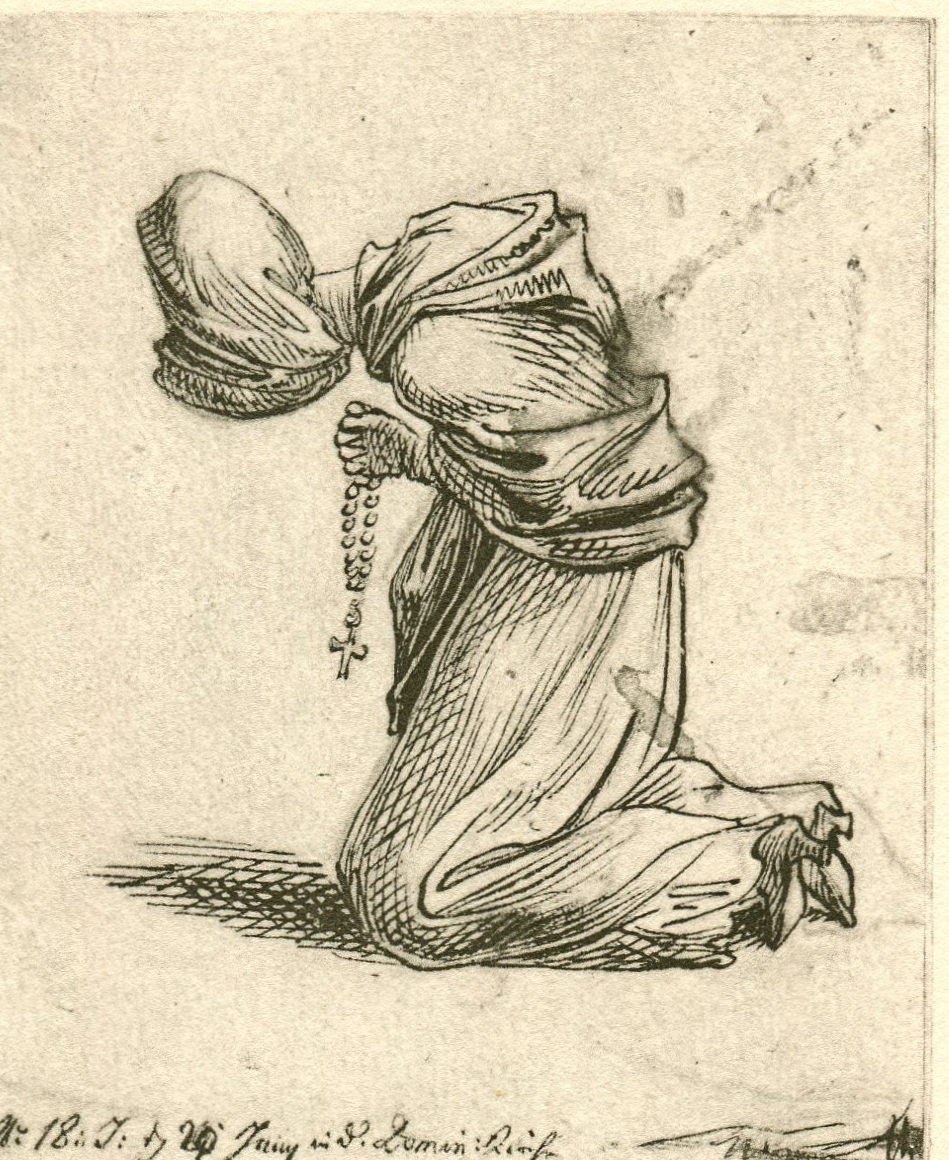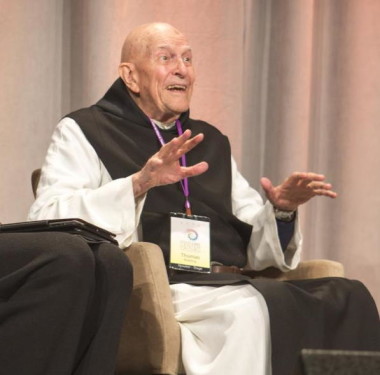Much of the discussion about Centering Prayer appears mundane. What’s the big deal anyway? Why can’t people just pray however they want? Even I sometimes question whether I could spend my time better than in challenging these teachings. Then along comes a statement from a Centering Prayer “guru” that is so outrageous it puts everything into perspective. Such a statement was shared with me today.
Watch this video, which was released last month by the Garrison Institute, for which Fr. Thomas Keating is a spiritual adviser. Pay close attention from about 45 seconds until 1 minute 6 seconds. He’s a bit hard to hear and understand, so turn your volume all the way up.
Now, did you catch that?
Fr. Keating said that contemplation “moves beyond [the] dichotomy” of good and evil, that “all the opposites are resolved” by it.
What is he talking about? Is he right? Is this what Christian contemplation does?
Absolutely not! In fact, this statement alone is so far outside the teaching of the Catholic faith that it should open the eyes of every Christian who has been told that Centering Prayer is in the same category of prayer that the saints practiced.
The Pontifical Council for Culture and the Pontifical Culture for Religious Dialogue wrote:
“In New Age there is no distinction between good and evil. Human actions are the fruit of either illumination or ignorance. Hence we cannot condemn anyone, and nobody needs forgiveness. Believing in the existence of evil can create only negativity and fear.” (Jesus Christ, the Bearer of the Water of Life: A Christian Reflection on the ‘New Age,’ 2.2.2)
Fr. Keating’s teaching is New Age, not Christian.
Good and evil are real!
The Catechism repeatedly and unabashedly teaches the dichotomy of good and evil. For example:
“Human acts, that is, acts that are freely chosen in consequence of a judgment of conscience, can be morally evaluated. They are either good or evil.” (No. 1749)
And
“There are concrete acts that it is always wrong to choose, because their choice entails a disorder of the will, i.e., a moral evil. One may not do evil so that good may result from it.” (No. 1761)
Becoming aware of God’s presence within oneself is a key component of Centering Prayer. Yet here is how the Catechism speaks of God’s presence in the soul:
“Deep within his conscience man discovers a law which he has not laid upon himself but which he must obey. Its voice, ever calling him to love and to do what is good and to avoid evil, sounds in his heart at the right moment. . . . For man has in his heart a law inscribed by God. . . . His conscience is man’s most secret core and his sanctuary. There he is alone with God whose voice echoes in his depths.” (No. 1776)
In other words, the innermost sanctuary of man, his “inner core” where he meets with God is his conscience! He must obey the law of God written in his heart. There can be no communion with the indwelling God without acknowledging the difference between good and evil, rejecting evil, and choosing good.
Centering Prayer suggests that good and evil are not real, but only constructs that a person moves beyond as he grows spiritually. Such a teaching mocks the doctrine of Original Sin. If no choice is good as opposed to evil, no choice has moral value. No choice can separate a person from God.
What about Original Sin?
Unsurprisingly, given this latest statement, Fr. Keating’s view of Original Sin is problematic. In Open Mind, Open Heart, he defines Original Sin as:
“A way of explaining the universal experience of coming to full reflective self-consciousness without the inner conviction or experience of union with God.”(20th Anniversary Edition, p. 189)
Thus his rejection of “the dichotomy of good and evil” makes perfect sense in the context of his theology. For Fr. Keating, good and evil are illusions. Original Sin is an illusion. What man needs, according to Fr. Keating, is a change of consciousness. Redemption is meaningless; what are we to be redeemed from? Who is to redeem us? After all, Fr. Keating has also said that the distinction between God and the soul is an illusion. If our “true self” is God, all we need to do is tap into that true self by ignoring our conscious thoughts and feelings and changing our inner convictions. We do not need to journey towards union with God in this view. We already are in union with God. We just don’t know it!
Only the truth heals
In contrast, the USCCB writes of sin and redemption:
“We cannot speak about life in Christ or the moral life without acknowledging the reality of sin, our own sinfulness, and our need for God’s mercy. When the existence of sin is denied it can result in spiritual and psychological damage because it is ultimately a denial of the truth about ourselves. Admitting the reality of sin helps us to be truthful and opens us to the healing that comes from Christ’s redemptive act.” (Excerpt from the United States Catholic Catechism for Adults, as found on the USCCB website)
Far from healing our wounds, rejection of the reality of sin causes us further damage. This rejection of reality does not destroy a false self–it creates one! If we desire healing, we must bring the wounds of sin to Christ and receive His mercy.
No good and evil, no sin, no redemption, no mercy. Yet the Holy Father Pope Francis has declared this the Year of Mercy.
Practicing Centering Prayer brings a false peace by denying that the conflict within ourselves and in our world has any meaning. We are told to simply “detach” from our thoughts and feelings about it, to move beyond opposites such as good/evil and God/man. We are told to go beyond them, to a deeper level, beyond reason, beyond feeling, beyond imagination.
This latest video demonstrates that doing so means going beyond the boundaries of our faith in Christ. May I also say it is beyond the pale?




 SpiritualDirection.com with a different title. It has been slightly edited.
SpiritualDirection.com with a different title. It has been slightly edited.

